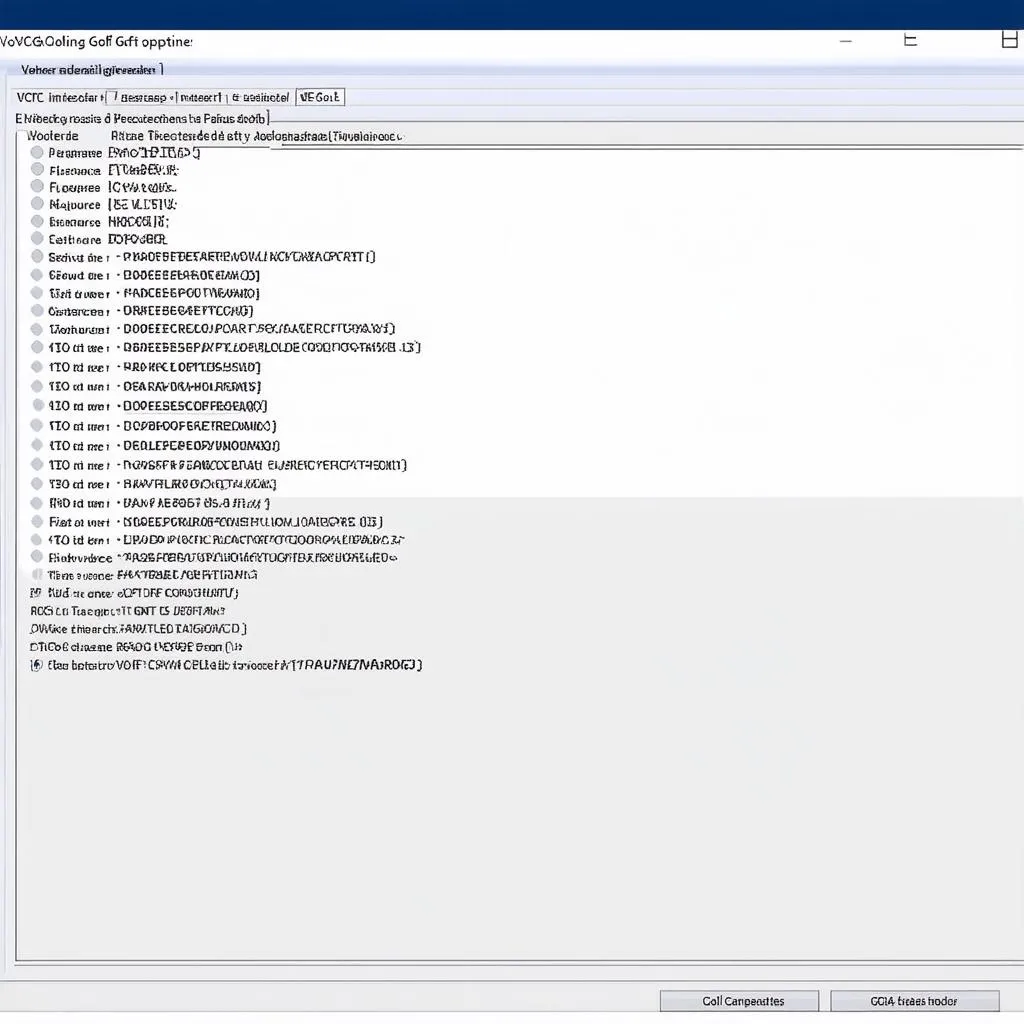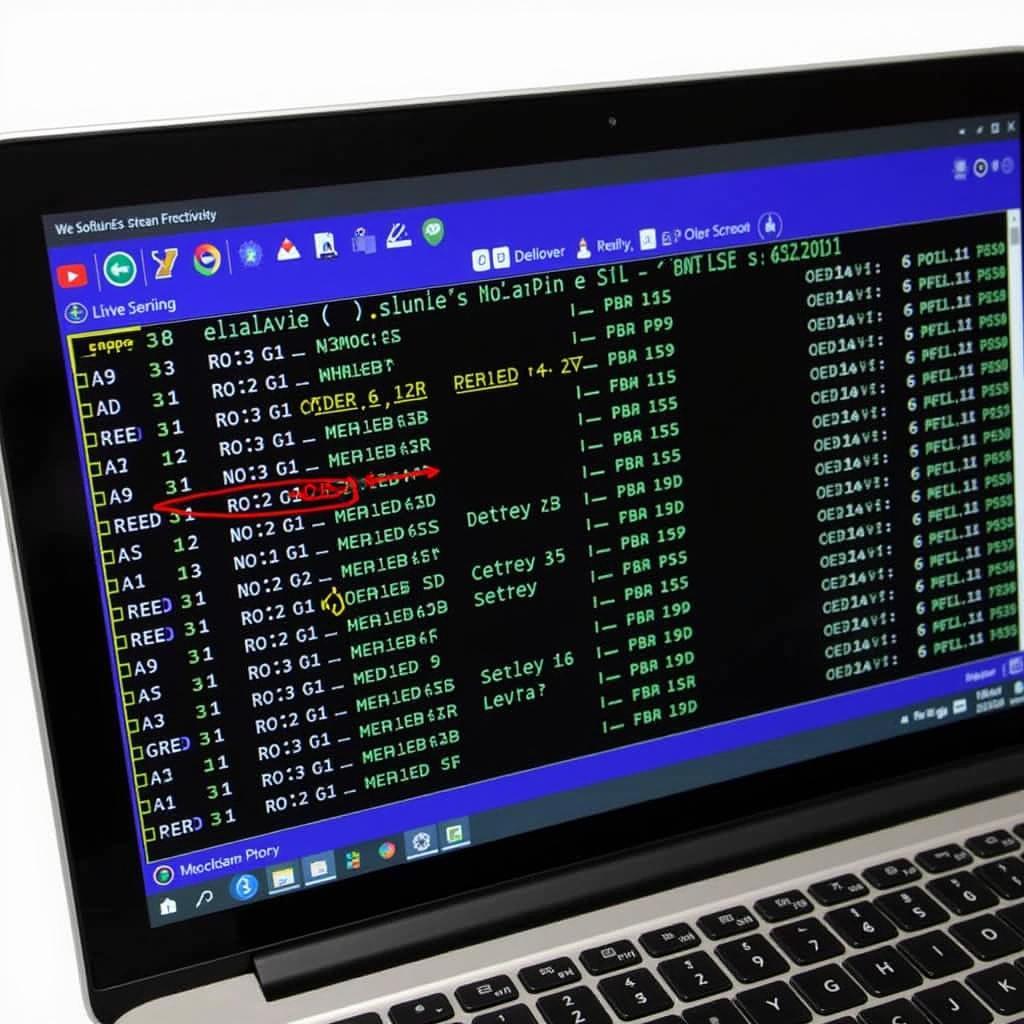Understanding your car’s oil pressure is crucial for maintaining engine health and preventing costly repairs. The VCDS oil pressure measuring block provides a powerful tool for diagnosing potential issues and ensuring optimal performance. This guide delves into the intricacies of using VCDS to monitor oil pressure, interpret the readings, and identify potential problems.
What is a VCDS Oil Pressure Measuring Block?
A VCDS oil pressure measuring block is a specific data channel within the VCDS software that displays real-time oil pressure readings from your vehicle’s sensors. This allows you to monitor pressure fluctuations under various driving conditions, identify potential leaks, and diagnose faulty sensors or oil pumps. It’s a vital tool for preventative maintenance and troubleshooting. Accessing the correct measuring block is essential for accurate diagnosis. Understanding the specified values for your particular engine code is paramount for accurate interpretation.
After the opening paragraph, you can find more detailed information about general VCDS oil pressure readings on our dedicated vcds oil pressure page.
Locating the Correct Measuring Block for Your Vehicle
Finding the right measuring block for your car requires knowing your engine code. This code can usually be found on a sticker in your engine bay or in your vehicle’s documentation. Once you have the engine code, refer to the VCDS label file or online resources to determine the corresponding oil pressure measuring block. This is crucial because different engine codes use different measuring blocks. Using the incorrect block can lead to misdiagnosis and potentially harmful actions.
Interpreting VCDS Oil Pressure Readings
Once you’ve located the correct measuring block, understanding the readings is the next step. Typical oil pressure values vary depending on engine temperature, RPM, and load. A healthy engine usually displays higher pressure at cold start and lower pressure at idle when warm. Significant deviations from these norms can indicate a problem. For instance, consistently low pressure can signal a worn oil pump, while excessively high pressure could suggest a blocked oil passage. Consulting factory specifications for your engine code is essential for accurate interpretation.
Common Issues Revealed by VCDS Oil Pressure Measuring Blocks
VCDS oil pressure measuring blocks can reveal a range of issues, including:
- Low Oil Pressure: This can indicate a failing oil pump, worn bearings, or low oil levels.
- High Oil Pressure: This could point to a blocked oil passage, a faulty pressure relief valve, or the wrong oil viscosity.
- Fluctuating Oil Pressure: This may suggest a problem with the oil pressure sensor, a failing oil pump, or a blockage in the oil system.
You might also be interested in checking out our article on vcds engine measuring blocks for a broader perspective on engine diagnostics.
How to Check Oil Pressure with VCDS: A Step-by-Step Guide
- Connect your VCDS interface to your vehicle’s OBD-II port.
- Turn the ignition on, but do not start the engine.
- Launch the VCDS software on your computer.
- Select the “Select Control Module” option.
- Choose “Engine” from the list of modules.
- Navigate to the “Measuring Blocks” function.
- Enter the correct measuring block number for your engine code.
- Start the engine and observe the oil pressure readings.
- Monitor the pressure at idle, under load, and at different RPMs.
- Compare your readings with the factory specifications for your engine.
For those interested in monitoring other engine parameters, our guide on vcds oil temperature provides valuable insights.
Why is Monitoring Oil Pressure Important?
Monitoring oil pressure is vital for preventing catastrophic engine damage. Low oil pressure can lead to increased friction and wear on engine components, eventually resulting in costly repairs or even engine failure. Regularly checking oil pressure with VCDS allows you to catch potential problems early and address them before they escalate. This proactive approach can save you time and money in the long run.
“Regularly monitoring oil pressure is like taking your engine’s pulse. It gives you a vital sign that can alert you to potential problems before they become major headaches,” says John Smith, Senior Automotive Diagnostic Technician at Smith Automotive Solutions.
Conclusion
The VCDS oil pressure measuring block is an invaluable tool for understanding your vehicle’s health and preventing costly repairs. By understanding how to locate, interpret, and analyze the data from this measuring block, you can proactively maintain your engine and ensure its optimal performance. Remember to consult factory specifications for your specific engine code. If you suspect any issues with your oil pressure, consult a qualified mechanic.
You might find our guide on how to check turbo with vcds useful for further engine diagnostics. Additionally, if you have a 1.8t engine, checking the 1.8t vcds misfire counter can provide valuable insights into potential performance issues.
FAQ
- What is a normal oil pressure reading? This depends on the engine, but generally, 25-65 psi at operating temperature is considered normal.
- What causes low oil pressure? Low oil level, a worn oil pump, or worn engine bearings.
- What causes high oil pressure? A blocked oil passage, a faulty pressure relief valve, or using the wrong oil viscosity.
- How often should I check my oil pressure with VCDS? Regularly, ideally every few thousand miles or during scheduled maintenance.
- Can I fix oil pressure problems myself? Some issues, like low oil levels, are easy to fix. Others, like a failing oil pump, require professional attention.
- What if my VCDS isn’t showing any oil pressure readings? Check your connections, the correct measuring block, and consult a professional if necessary.
- Can high oil pressure damage my engine? Yes, excessively high oil pressure can damage seals and gaskets.
Need help? Contact us via Whatsapp: +1 (641) 206-8880, Email: CARDIAGTECH[email protected] or visit us at 276 Reock St, City of Orange, NJ 07050, United States. Our customer support team is available 24/7.


